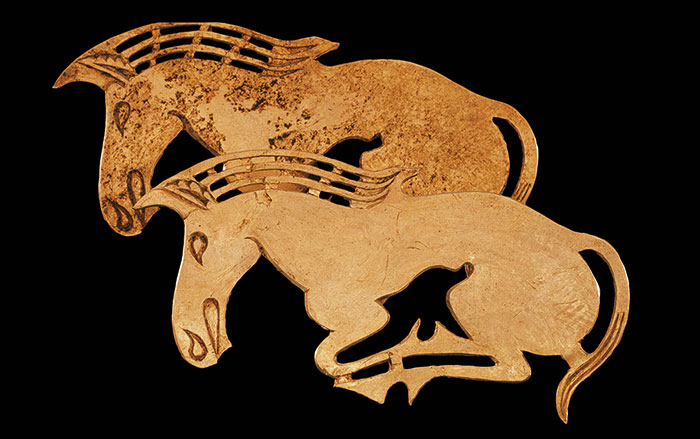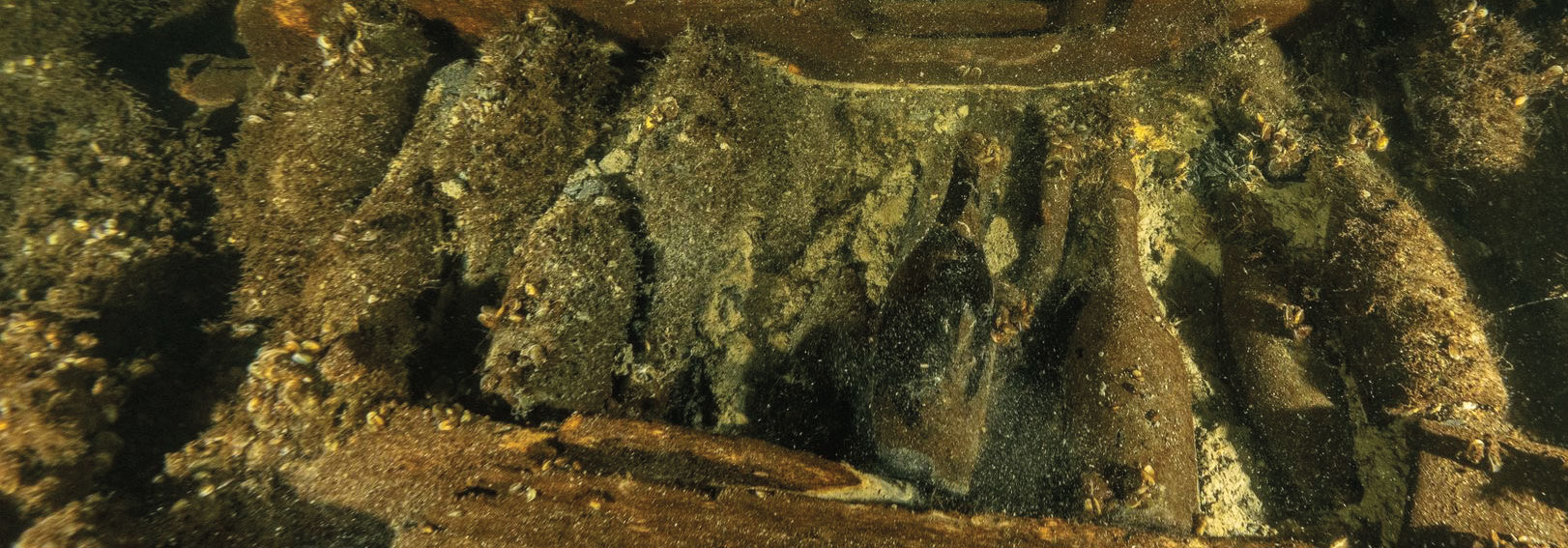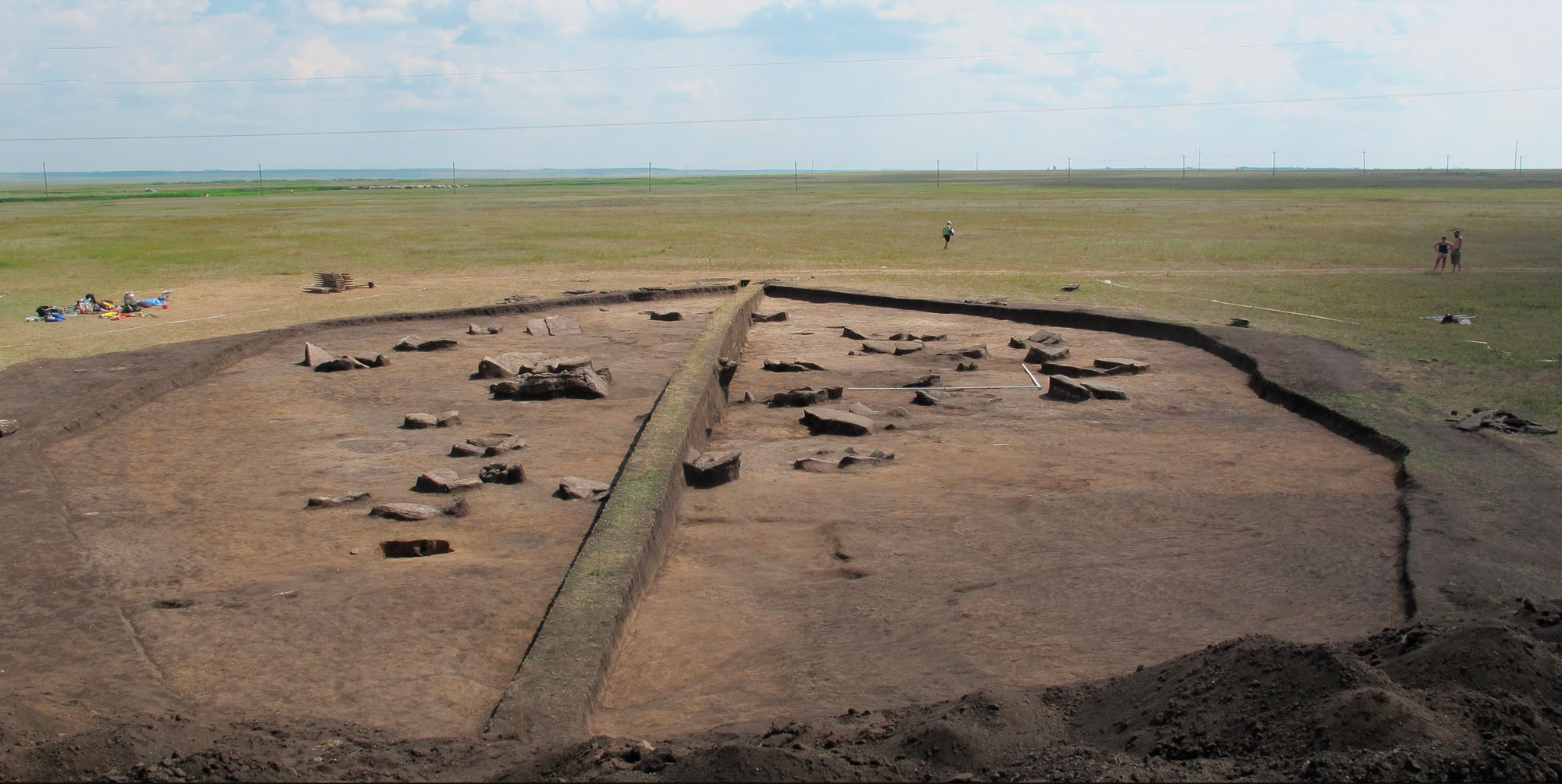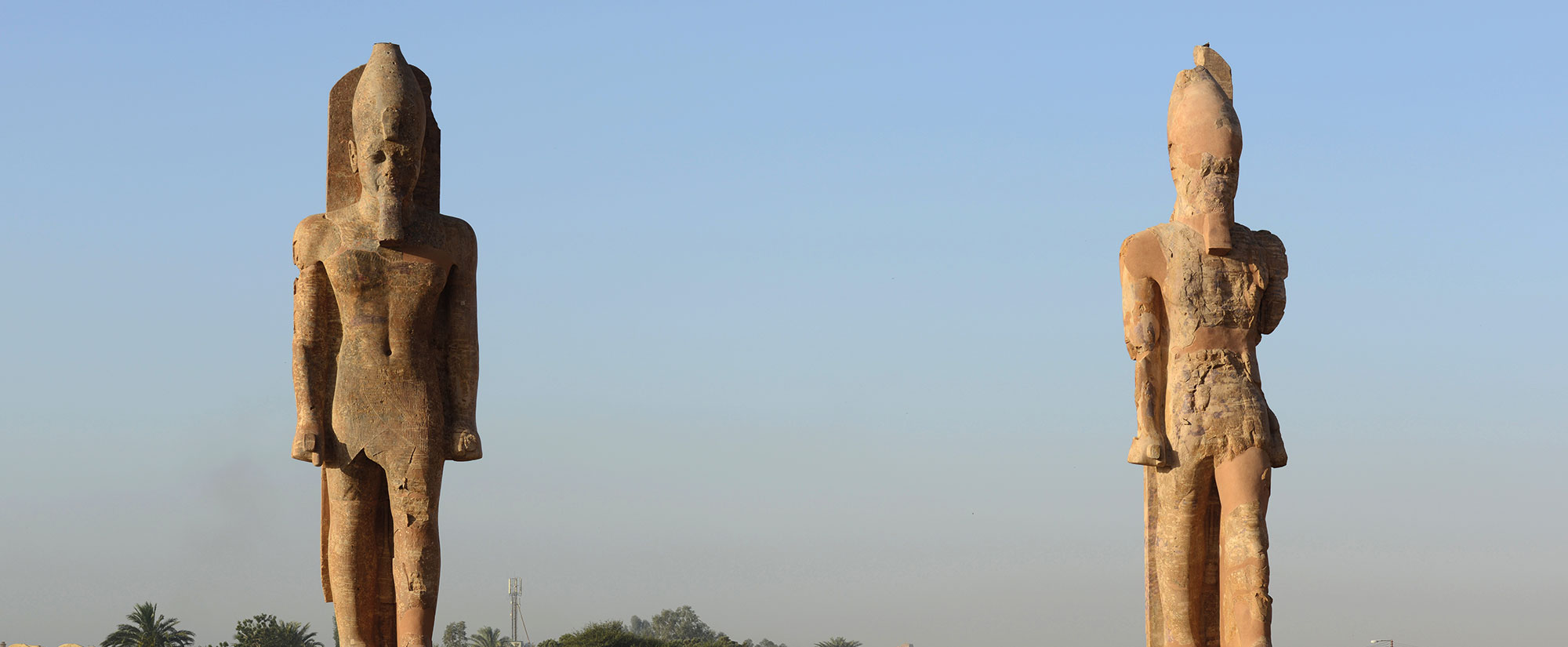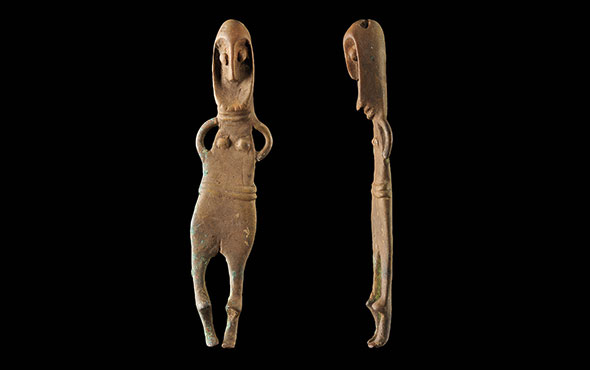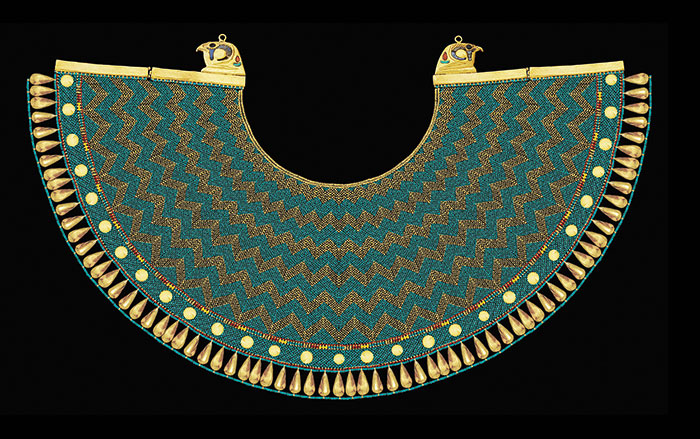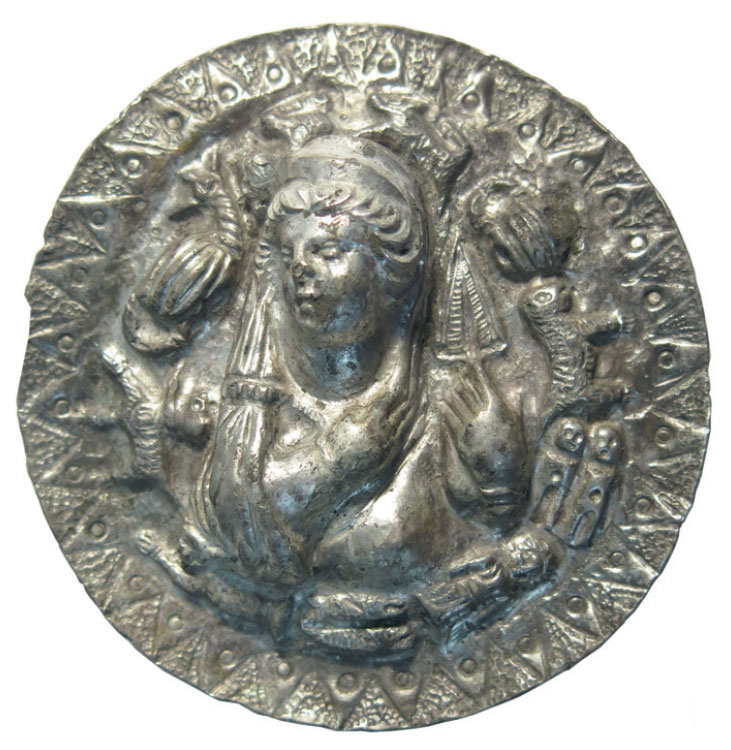
TAMAN PENINSULA, RUSSIA—Haaretz reports that excavation of the necropolis at the ancient city of Phanagoria in southern Russia has unearthed the 1,900-year-old grave of a woman who may have been a priestess of the Aphrodite cult and a man who was buried 1,500 years ago with a sword thought to have been forged in Iran. On the woman’s chest, researchers found an intact silver medallion featuring the goddess Aphrodite Urania and 10 signs of the zodiac to show the goddess in her divine, heavenly form. Maria Chashuk of the Phanagoria Archaeological Expedition, which is supported by the Oleg Deripaska Volnoe Delo Foundation, said the medallion may have been worn as a pendant with a cord strung through a brace on its reverse. The woman also wore silver earrings with dove-shaped pendants, another symbol of Aphrodite Urania. Other goods found in this tomb include a red clay jug with a twisted handle, iron scissors with a bronze handle, a bronze mirror, a string of more than 150 beads, and three bronze coins. Archaeologist Alexey Voroshilov said that the man was buried in a large, opulent tomb with a fine weapon whose wooden hilt was topped with a golden top in the distinctive style of the Sassanid Empire. It is the only one of its kind to have been found in Phanagoria, and it may have been a diplomatic gift, Voroshilov explained, since a mercenary working in the Bosporan Kingdom is unlikely to have owned such an object. The man was also buried with imported glass jugs, wooden and metal utensils, and wooden boxes of cloth. To read about an animal bone gaming piece inscribed with the name of Aphrodite, go to "Artifact."



